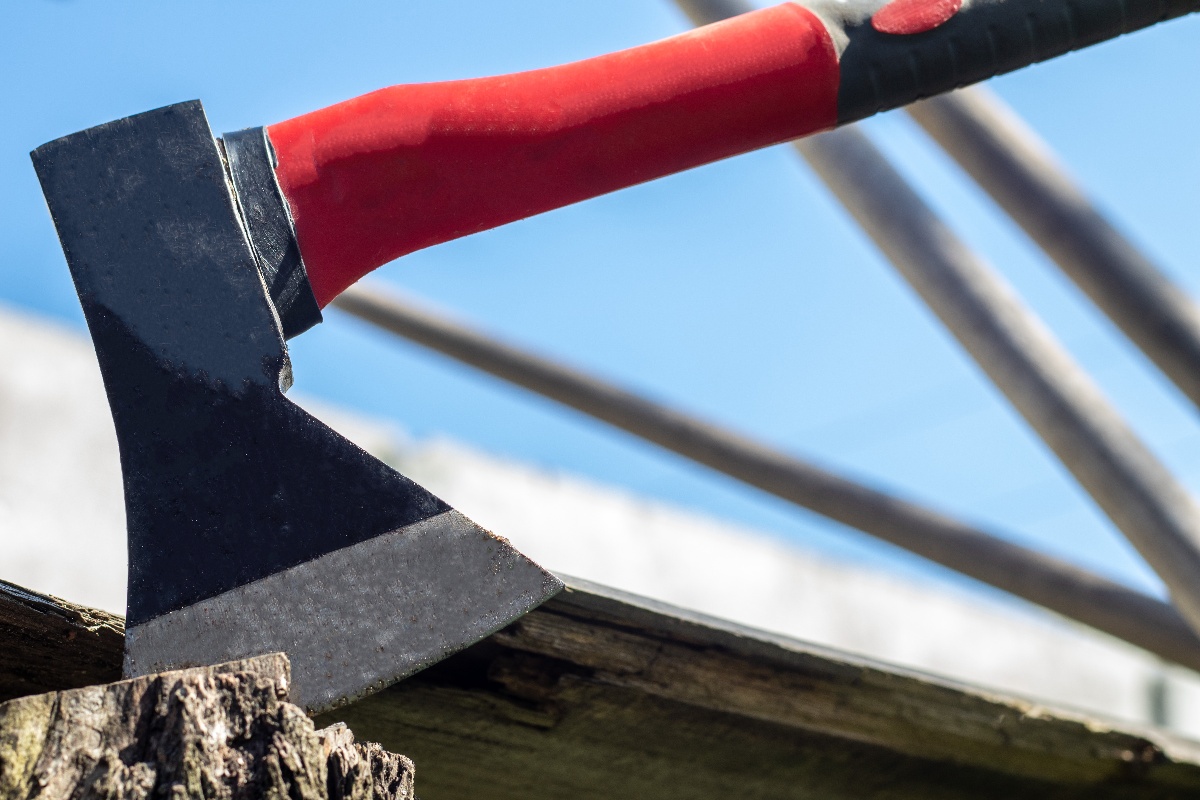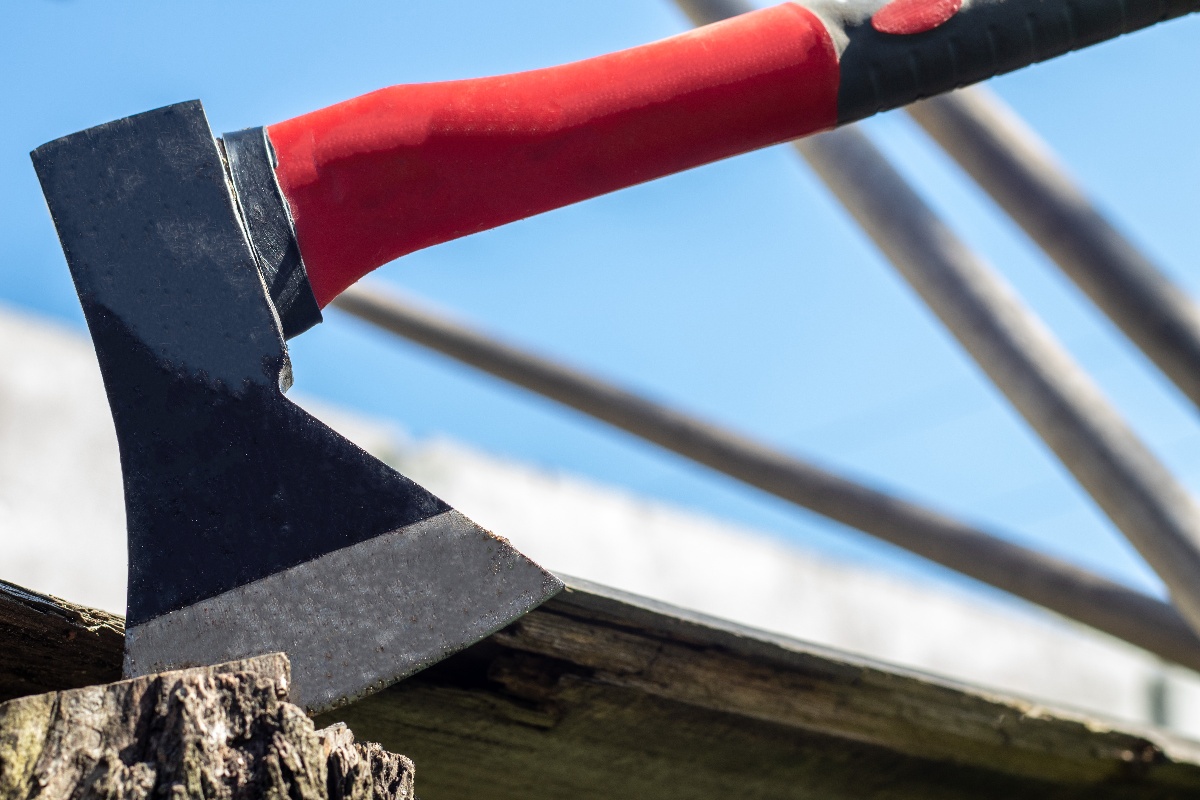
The design of the axe handle is often overlooked, but engineering considerations can lead to significant improvements in performance, safety, and comfort. The materials and shape of axe handles have evolved over centuries alongside innovations in materials science and an increasing understanding of biomechanics.
Wood has formed the basis for most axe handle designs since the Stone Age, with preferred species taking advantage of directional strength from the grain structure. Major transitions came with the introduction of metal wedges to secure heads to the handle and, more recently, with molded polymer handles and attachments to shock-absorbing shaft coils.
However, wood remains a popular choice–it has a strength-to-weight ratio superior to steel, can flex and absorb high impacts without fracturing, and the variability of natural grain patterns facilitates secure wedging of the blade. The orientation of the wood grain is crucial, as handles can withstand more shock when force is applied parallel rather than perpendicular to the fibers.
Achieving the optimal handle design requires analyzing the user's grip, swing biomechanics, the force exerted on contact with the target, and expected operating conditions. The shape, center of mass, cross-sectional dimensions, grip pattern, and moisture response are all engineering considerations for the materials and geometry selected. This article will explore classical and modern handle designs through the lens of structural and mechanical engineering to quantify performance advantages and how fiberglass-reinforced plastic (FRP) is one of the ideal materials for axe handles.
Axe Handle Engineering Design Factors
Strength and durability are paramount concerns for axe handles. The handle must withstand large forces from overstrikes or misses without breaking. The grain orientation, protective coatings, and inheritance of minor defects impact the handle's lifetime under repetitive loading. Premium ash or hickory wood can last for years of daily use if properly maintained. Polymers and fiber-reinforced composites provide excellent durability but tend to transfer more vibration.
Vibration damping is crucial both for comfort and to prevent cumulative injuries like carpal tunnel or tendonitis. Wood grains naturally dissipate shockwaves laterally within the handle. Polymeric handles with specific geometries and shore hardness ratings can also provide excellent damping through the viscoelastic behavior of the material. Adding layered dense rubber grommets at key grip points is another way to isolate the wrist with padded gloves, and secure hand placement further dissipates vibration.
The optimal handle width, taper, and curvature must balance secure gripping leverage during a full swing while preventing the handle from torquing in the hand on impact. Texturing like checkering in polymer handles enhances grip security when wearing gloves but adds manufacturing complexity. An oval or rectangular cross-section provides a superior torsional grip to the round. Optimized grip symmetry also contributes to balanced swing mechanics.
Weight distribution impacts swing speed, control, and follow-through. Lighter handles increase acceleration, but heavier handles prevent overswing and diminish recoil, which causes wrist fatigue. Safe follow-through depends on the combined center of mass with the axe head and shaft length, determining rotational inertia. Handles with removable weights allow customization for each user.
Temperature and moisture can degrade wood handles over time. Polymer handles resist weathering, but differences in thermal expansion coefficients require strong mechanical bonds with inserts. Protective lacquers, fiberglass reinforcing, and sealants around top ends improve weatherproofing for wood handles seeing heavy outdoor use.
Potential Materials for Axe Handles
The mechanical properties of handle materials determine their strength, shock absorption, and environmental resilience through complex interrelationships at the molecular level. Wood has stood the test of time due to its unparalleled toughness–the combination of moderate strength and extensibility before rupturing. The natural variability of wood grain patterns should, therefore, be embraced for their unique engineering advantages. However, wood is hygroscopic, and dimensional stability is a challenge.
Metals like high-grade aluminum offer the ultimate tensile and compressive strength combined with ductility. However, their elastic stiffness presents challenges for vibration damping, given the high rigidity and limited shock absorption before yield failure. Consequently, most metal handles require thick elastomeric damping elements at critical wear points.
In selecting handle materials, the lifecycle frequency of impacts, along with humidity and UV exposure levels, dictate optimized combinations of strength, stiffness, fracture toughness, fatigue threshold, and environmental robustness. Characteristic impact force vectors should determine the orientation of reinforcing fibers or wood grains for the greatest efficiency.
Fiberglass Reinforced Plastic for Axe Handles
Fiberglass-reinforced plastic composites have emerged as a promising axe handle material combining strength, vibration damping, and weather resistance. The reinforcing glass fibers provide strength and stiffness rivaling wood, while the plastic polymer matrix protects against moisture and resists cracking.
The anisotropic properties of aligned glass fibers allow custom stiffness tuning by orienting fibers along the handle length to resist impact shocks while facilitating flexibility for grip ergonomics. Aerospace-grade epoxy resins in the polymer matrix also have high strength-to-weight ratios. The result is an ultra-lightweight but tough handle.
The modular nature of FRP lends itself to inserts and customizable handles. By tuning handle geometry, wall thickness, fiber arrangements, and matrix plastic composition, FRP offers the versatility to balance impact resistance, vibration damping, and user ergonomics for axe handles that meet the strength demands of professional logging.















